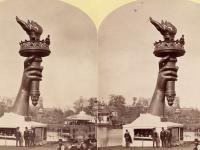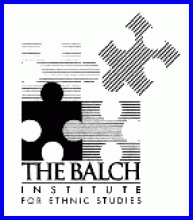In the nineteenth-century, Philadelphia’s publishing industry flourished with hundreds of newspapers, magazines, and other forms of print media. Newspapers, in particular, had the most impact on the Philadelphia public. The steam-powered presses that produced the papers allowed for cheaper production, enabling affordable penny-newspapers. Penny papers, like William M. Swain’s Public Ledger (1836) played to working class Philadelphians. These newspapers often featured sensational headlines, local news, and human-interest/entertainment pieces. During Philadelphia’s Centennial Exhibition, newspapers facilitated frenzy over the Fair’s exhibits, famous guests, and patriotic celebrations. Many local women would save newspaper articles, newspaper images, and ephemera to compile them into a large scrapbook. These scrapbooks serve as a peek into a historical moment and illustrate how the Centennial Exhibition was discussed in 19th century print media.
The advancing printing technologies also enabled the development of a magazine publishing industry. These monthly publications featured colored images, articles, and a high subscription rate. Magazines, unlike nineteenth-century newspapers, sought readership among the middle and upper-classes. These magazines often included poems, fiction, essays, and articles emphasizing an upper-class lifestyle. Many writers contributed to these magazines, both as authors and editors. In addition to the newspaper print media at the Centennial Exhibition, there was also large amounts of magazines and colored ephemera, like hand-painted images, hand-drawn Exhibition tickets, and photographs. These higher quality newspapers and magazines were geared to those who could afford to visit the Centennial Exhibition in Philadelphia. The black and white newspapers may have been read by working-class Americans, who could not afford to enter the Exhibition.
This lesson asks students to compare and analyze magazines and newspapers from eighteenth and nineteenth-century to understand the differences and similarities between newspaper and magazine culture. Then students will compare eighteenth and nineteenth-century print media to twenty-first century media. When looking at the newspapers and magazines (from the 19th-21st century), students should think critically about the information presented. What can we learn from nineteenth-century print culture? How is it related to twenty-first century print culture? Students will discover what was important to Philadelphians during the eighteenth and nineteenth-centuries and compare that with what is important today. Students can reflect on advertising and reporting on a world’s fair in the 19th century versus a 21st century world’s fair. How would media be different? How would it be the same? Examining these primary sources will offer an opportunity to discuss the importance of print culture to nineteenth-century Philadelphians and compare that with current issues surrounding print culture. For example, the recent shift of the Philadelphia Inquirer to a nonprofit organization, in an effort to save the paper. What is the future of print culture in the United States? How should it be available? Paper, online, both?



